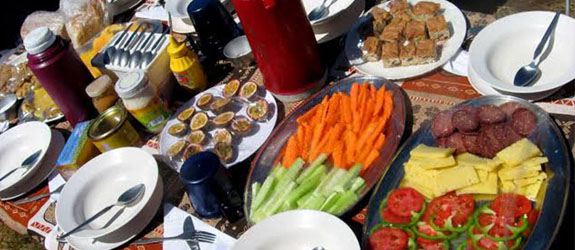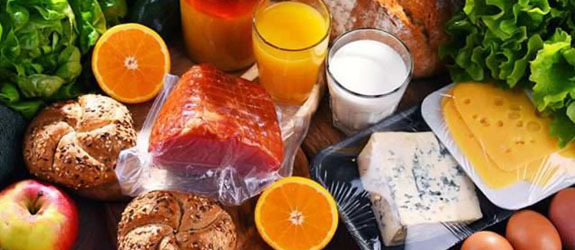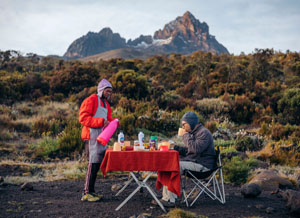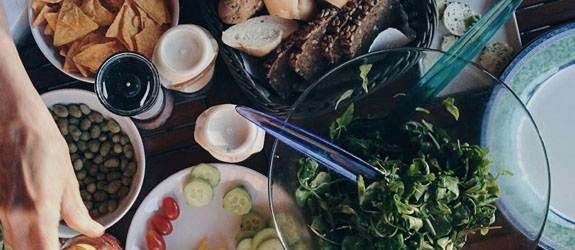
Eating Right on Your  Kilimanjaro Adventures Ensure a Pleasant Climb
Kilimanjaro Adventures Ensure a Pleasant Climb
The Kilimanjaro Food Menu is specially crafted to provide the energy and nutrition required for a challenging climb up Africa’s highest peak at 5895 meters. While you will be served with different menus, here is what your typical Meals in Kilimanjaro will look like.
- Breakfast often starts with hearty porridge, eggs, sausages, toast with jams, and steaming hot beverages like tea or coffee.
- Lunch, carried in your Kilimanjaro Daypack, is a mix of sandwiches, boiled eggs, chicken portions, fresh fruits, and a cold drink to refresh you.
- Evening tea offers the comfort of biscuits, peanuts, and a climbers' favourite - salted popcorn.
- Dinner is a comprehensive meal, beginning with soup and progressing to a main course that includes a choice of meat or chicken, vegetable sauce, rice, pasta, or potatoes, and culminating in fresh fruit dessert.
Surprisingly, brands familiar to many, such as Heinz, Nescafe, and Nestle, often appear on the Kilimanjaro Food Sample. In case you have dietary restrictions, then no worries. Just inform us in advance, and we will address your needs.
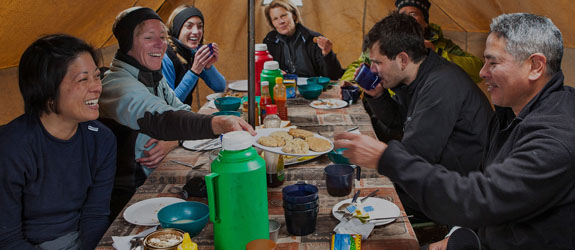
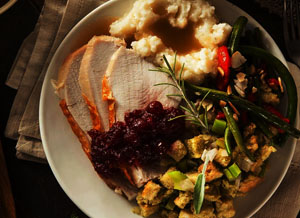
From Natural Wonders To Secluded Paradises
